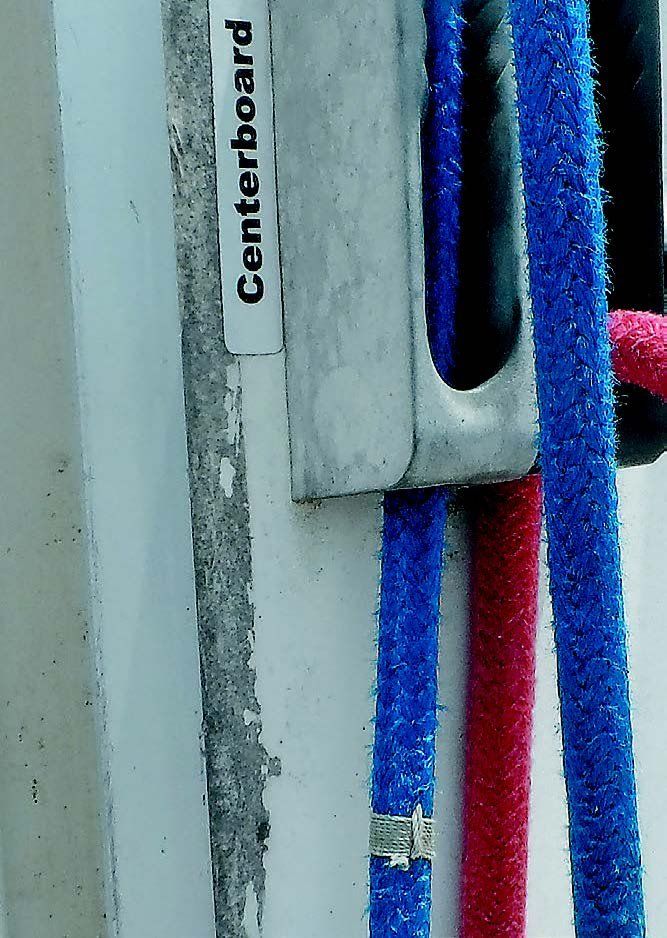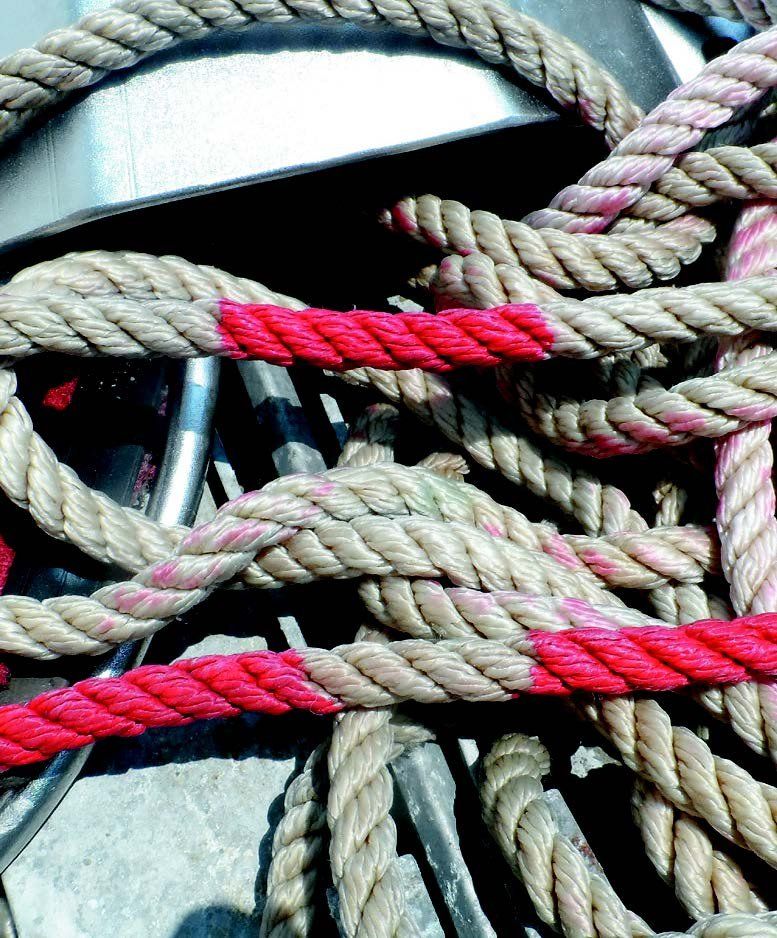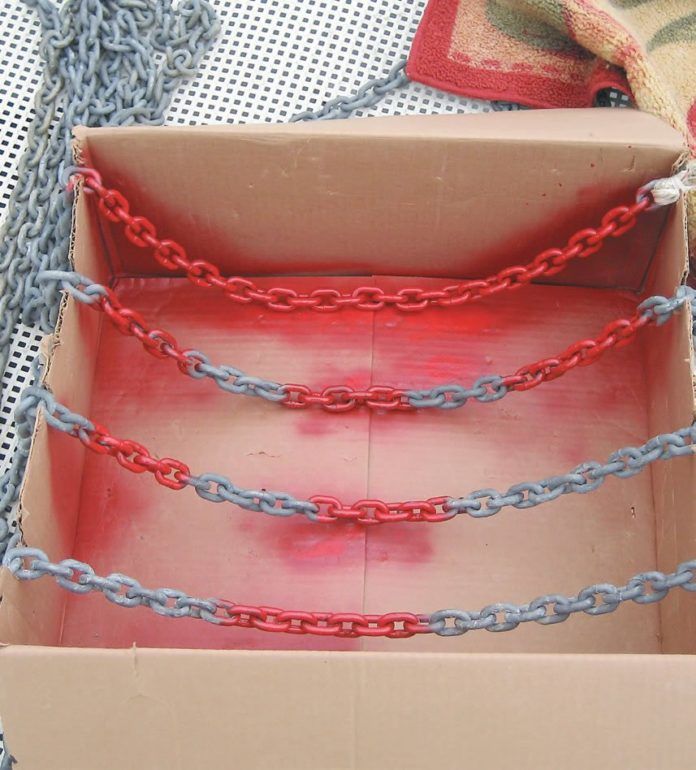Boats sail better when rode, docklines, running rigging, and sail control lines are properly adjusted, and many lines are easier to adjust if common positions are marked.
Anchoring is the most obvious example. Measuring scope requires knowing how much rode is deployed. You can pre-measure rode or time the drop, but putting marks every 25 feet offers a quick visual counter.
Marks on the centerboard controls make it clear when it is fully up, down, or somewhere in between. Reefing is faster if you know how far to ease the halyard, and marking the genoa furler line allows quick deployment of just enough jib. Some of these marks must be easy to read, others less so, and some may need to be repositioned occasionally, while others may not.
Paint
Paint is easy to see and relativelylong lasting. This is our standard method for marking anchorrodes, either chain or fiber. We like 6-inch wide bands every 25 feet; 1 at 25, 2 at 50 and so forth to 100 feet, after which the color changes. The US Navy even has its own standard. Latex paint works well on nylon and wont hurt it. Rustoleum Stops Rust is good onchain; it wears off the outside of the links ratherquickly, but remains visible between the links through hundreds of anchoring cycles. Paint is not for Dyneema; it is too slippery to take paint well. Paint is not preferred for marking running rigging because the marks cannot be moved when lines stretch, are trimmed, or when favored adjustments change. Some find it handy for color-codingdocklines; a distinctive band at one end makes it easy to grab the right one.

Cable Ties, cloth, or cord
Chain can also be marked with pop-in markers or cable ties, which can also be used on nylon rode. Cable ties hold up pretty well, even on abrasive sand bottoms, but in a windlass they can crack or-more rarely-cause the chain to jump or foul. In our view, cable ties are one more bit of disposable plastic that doesn’t need to go into the sea. Strips of cloth, cord, or leather can be used instead. Indicators that you can feel while setting or retrieving dinghy rodes, kedges, or small-boat anchors can be helpful on a dark night when your headlamp isn’t handy. In most cases, paint is easier and better.
Whipping.
This is a traditional workhorse for adjustment lines. It takes a few minutes, but works on all rope types, is durable, and is reasonably easy to relocate. We like one mark for the first setting, two for the second and so forth. Apply tight so it wont snag.

Heat shrink, Marker, or Tape
Heat Shrink. This alternative to sewing can slide or tear, so we don’t like it for critical markings, such as centerboard control lines and halyard reef markings. The plastic edge tends to hang up, making it unsuitable for lines that are winched or that pass though a clutch. Dont use on Dyneema, which is sensitive to heat.
Sharpie Pen. This is fast, but prone to rapid fading. We only use this for small tick marks when splicing. The marks are not easily visible, and they cannot be adjusted.
Tape. Low durability eliminates tape from permanent use. However, ease of application and removal is good for testing settings-just not too long.
To reduce wear, marks should be a uniform distance before the jammer. Two to three inches seems good. With critical lines so marked, you will look like a pro when you anchor, set a reef, or unfurl a reefed genoa, getting everything right the first time.
Technical Editor Drew Frye is author of Rigging Modern Anchors (2018, Seaworthy Press). He blogs at www.sail-delmarva.blogspot.com.




































